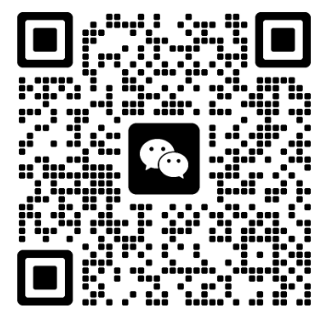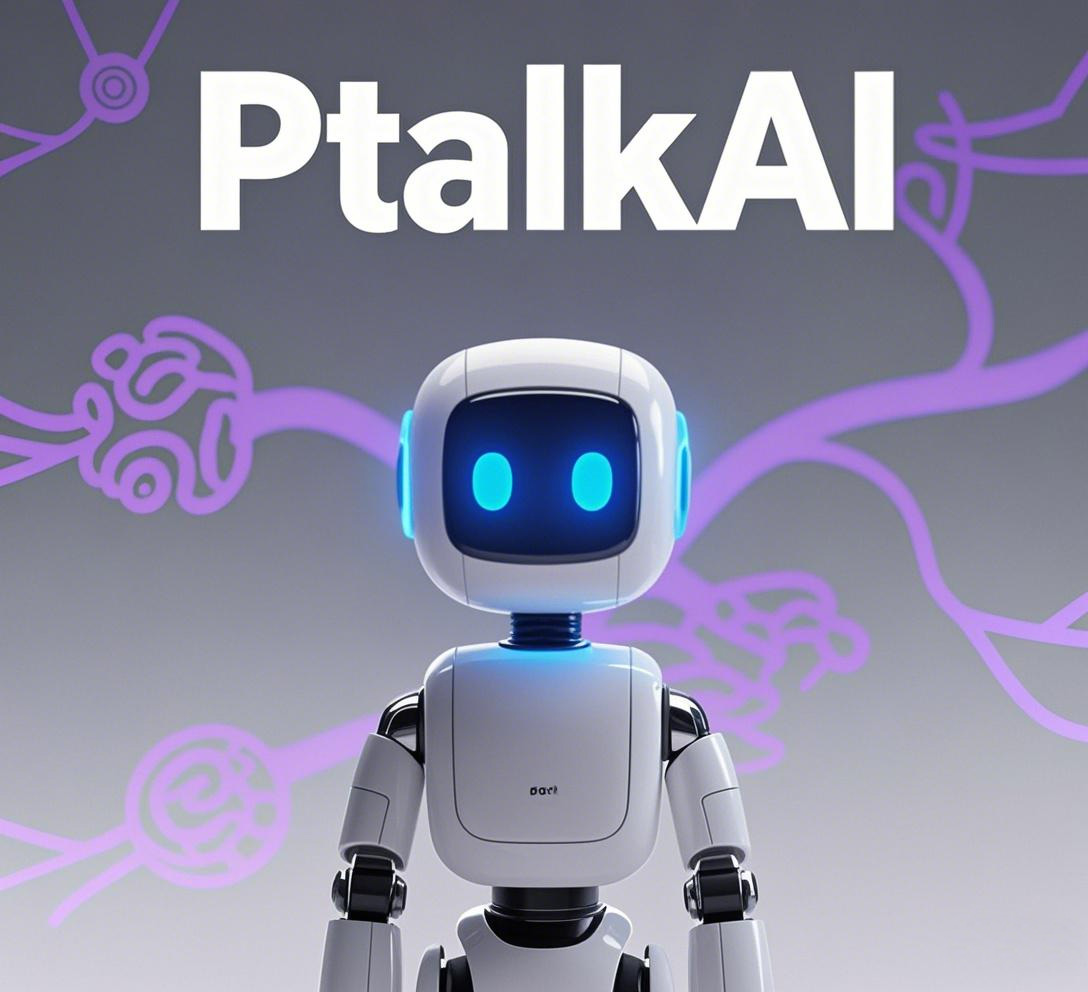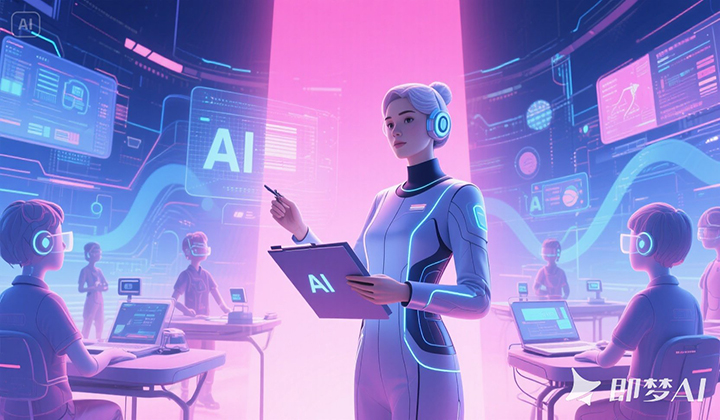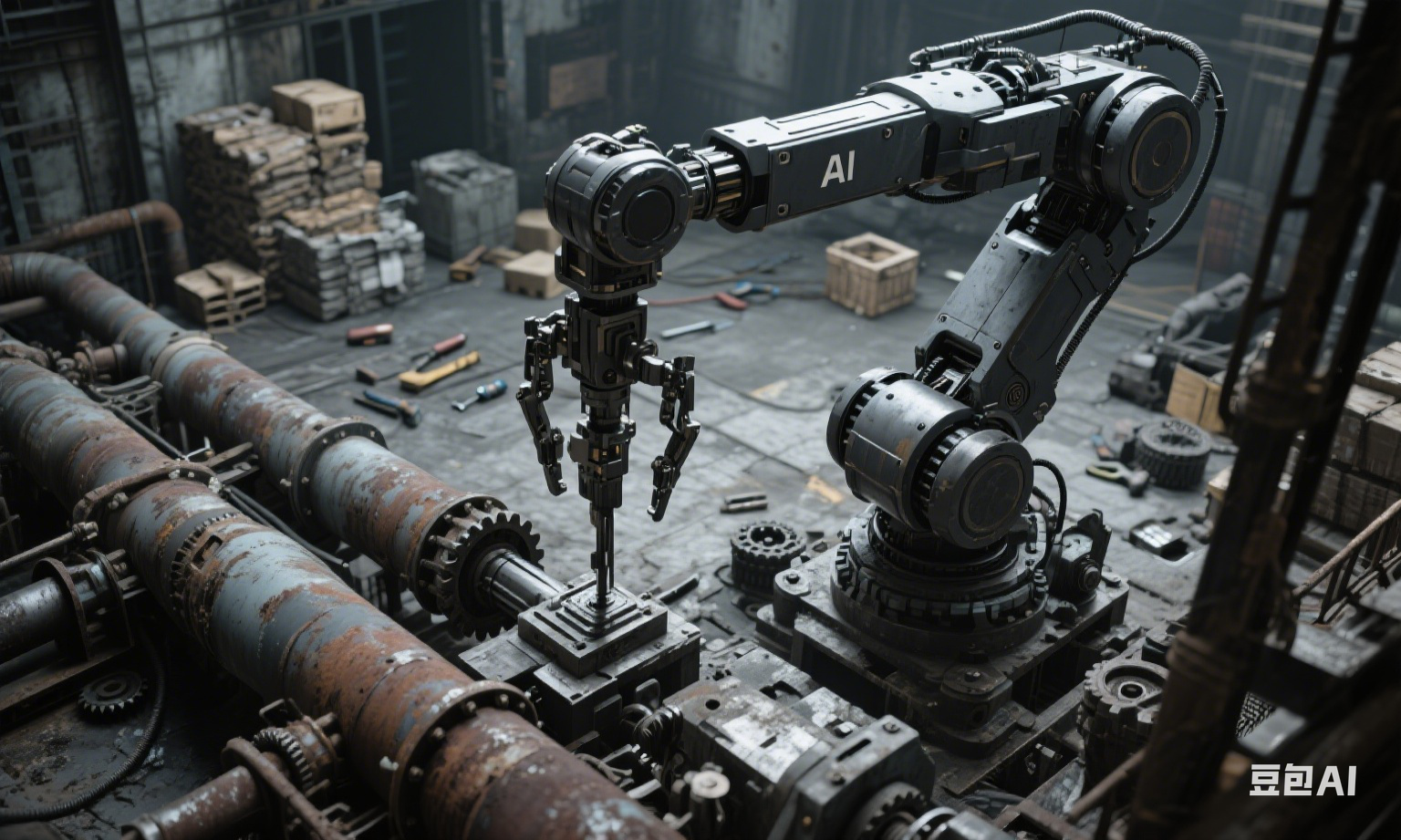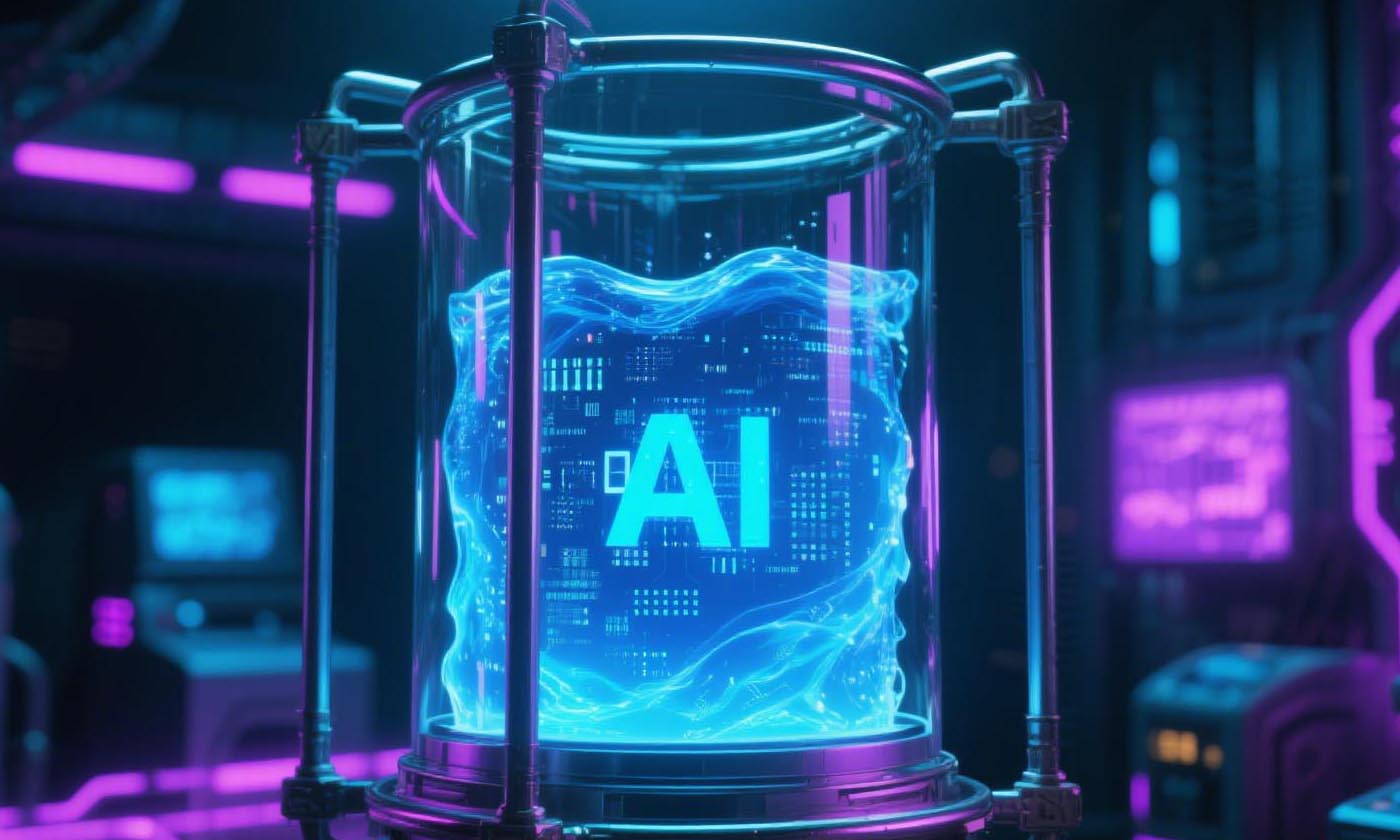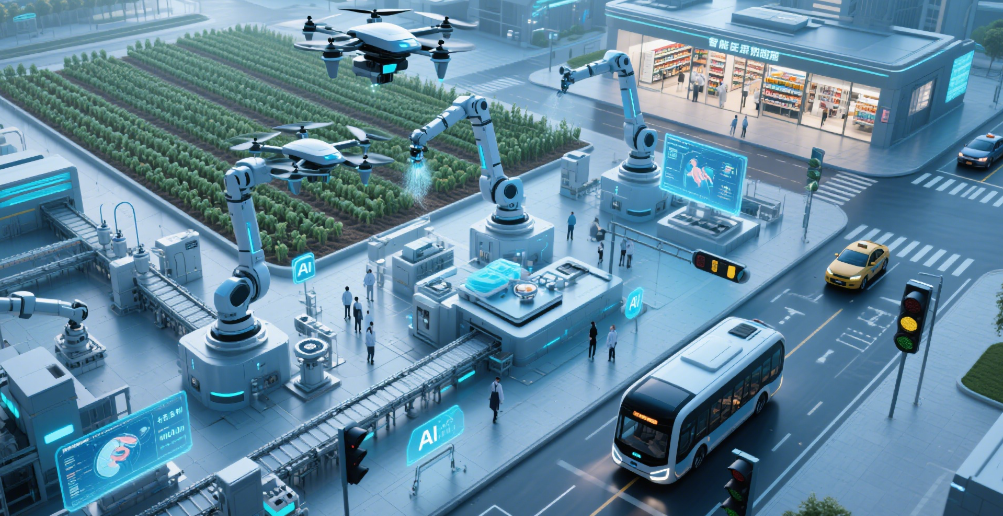AI and Art: Redefining Creativity in the Digital Age
观棋 2025-06-18
The intersection of artificial intelligence (AI) and art has emerged as one of the most fascinating and controversial frontiers in the modern creative landscape. Once considered a domain exclusive to human imagination, emotion, and self - expression, art is now being redefined by AI technologies that generate, analyze, and even critique creative works. From paintings and music to literature and film, AI is challenging traditional notions of creativity, authorship, and artistic value. This article explores the multifaceted relationship between AI and art, its impact on the creative process, and the philosophical and ethical questions it raises.
AI and Art: Redefining Creativity in the Digital Age
The intersection of artificial intelligence (AI) and art has emerged as one of the most fascinating and controversial frontiers in the modern creative landscape. Once considered a domain exclusive to human imagination, emotion, and self - expression, art is now being redefined by AI technologies that generate, analyze, and even critique creative works. From paintings and music to literature and film, AI is challenging traditional notions of creativity, authorship, and artistic value. This article explores the multifaceted relationship between AI and art, its impact on the creative process, and the philosophical and ethical questions it raises.
1. AI - Generated Art: From Algorithms to Aesthetics
AI - generated art encompasses a wide range of techniques and mediums. Generative adversarial networks (GANs) have been particularly influential in visual art. A GAN consists of two neural networks: a generator that creates new artworks and a discriminator that evaluates them, trying to distinguish between real art and AI - generated pieces. Through a process of iterative competition, GANs can produce images, paintings, and sculptures that mimic various artistic styles, from the impressionism of Monet to the abstract expressionism of Pollock.
For example, the Portrait of Edmond de Belamy, created by the Paris - based art collective Obvious using a GAN, made headlines in 2018 when it sold at Christie’s auction for $432,500. This event sparked debates about the value and authenticity of AI - generated art. Similarly, in music, AI algorithms can compose melodies, harmonies, and entire symphonies. Google’s Magenta project has developed tools that can generate music in the style of Mozart or create unique electronic beats, demonstrating the versatility of AI in auditory art forms.
In literature, AI - powered language models like GPT - 3 and its successors can generate stories, poems, and essays. These models are trained on vast amounts of text data, allowing them to mimic different writing styles and genres. While some may argue that these creations lack the depth of human - written works, they have opened up new possibilities for collaborative writing and experimental storytelling.
2. AI as a Tool for Artists
Rather than replacing human artists, AI is increasingly being embraced as a powerful tool to enhance the creative process. Digital artists use AI - based software to automate repetitive tasks, such as image color correction, background removal, and texture generation. For instance, Adobe’s Sensei AI technology integrated into its Creative Cloud suite offers features like intelligent cropping and automatic subject selection, saving artists time and enabling them to focus on the conceptual and expressive aspects of their work.
In the field of 3D modeling and animation, AI algorithms can generate realistic human movements, facial expressions, and natural landscapes. This allows animators to create more immersive and detailed worlds with greater efficiency. Additionally, AI - driven recommendation systems can suggest new ideas, inspiration, and techniques to artists by analyzing trends in art history, current popular works, and the artist’s own creative output.
3. Impact on the Art World: Markets, Exhibitions, and Criticism
The rise of AI in art has had a significant impact on the art market. Auction houses are now featuring AI - generated artworks, attracting both traditional art collectors and tech - savvy investors. However, issues of valuation remain complex. Unlike traditional art, where the value is often tied to the artist’s reputation, the creative process behind AI - generated art is less intuitive, making it challenging to determine authenticity and uniqueness.
In art exhibitions, AI - art installations are becoming more common, offering visitors immersive and interactive experiences. For example, teamLab, a Japanese digital art collective, uses AI and other advanced technologies to create large - scale, interactive artworks that respond to human presence and movement. These installations blur the boundaries between art and technology, engaging audiences in new ways.
AI is also influencing art criticism. Machine learning algorithms can analyze thousands of artworks to identify patterns, styles, and historical influences. These analyses can provide art critics with new perspectives and data - driven insights into the evolution of art movements and the works of individual artists. However, the role of human intuition and subjective interpretation in art criticism remains irreplaceable.
4. Philosophical and Ethical Considerations
The advent of AI in art raises profound philosophical questions. One of the central debates is about authorship. If an AI system generates an artwork, who should be considered the author? Is it the programmer who developed the algorithm, the person who trained the model, or the AI itself? This question challenges the traditional concept of the artist as a sole, creative individual.
Ethical concerns also abound. AI - generated art may sometimes appropriate the styles and works of living or deceased artists without proper authorization, raising issues of copyright and plagiarism. Additionally, as AI becomes more proficient in creating art, there are concerns about the potential devaluation of human - created art and the impact on the livelihoods of artists.
Another ethical consideration is the potential for AI - generated art to manipulate emotions and beliefs. Since AI can analyze human psychological responses to art, there is a risk that it could be used to create art with the intention of influencing viewers in specific, perhaps even harmful, ways.
5. The Future of AI and Art: Collaboration and Innovation
Looking ahead, the future of AI and art is likely to be characterized by increased collaboration between humans and machines. Artists may work closely with AI systems, using them as creative partners rather than mere tools. For example, an artist could start a painting, and an AI could suggest ways to develop the composition further, or a musician could collaborate with an AI - generated melody to create a more complex piece.
AI may also enable new forms of art that are currently beyond human capabilities. As AI algorithms become more sophisticated, they could generate artworks that explore concepts and ideas that are difficult for humans to express. Moreover, the integration of AI with other emerging technologies, such as virtual reality (VR) and augmented reality (AR), could create immersive art experiences that redefine how audiences engage with art.
In conclusion, the relationship between AI and art is a complex and evolving one. While AI poses challenges to traditional artistic norms and raises important philosophical and ethical questions, it also offers exciting new opportunities for creativity, innovation, and audience engagement. As technology continues to advance, the dialogue between AI and art will undoubtedly shape the future of the creative industries, forcing us to rethink what it means to be creative and what constitutes art in the digital age.
The intersection of artificial intelligence (AI) and art has emerged as one of the most fascinating and controversial frontiers in the modern creative landscape. Once considered a domain exclusive to human imagination, emotion, and self - expression, art is now being redefined by AI technologies that generate, analyze, and even critique creative works. From paintings and music to literature and film, AI is challenging traditional notions of creativity, authorship, and artistic value. This article explores the multifaceted relationship between AI and art, its impact on the creative process, and the philosophical and ethical questions it raises.
1. AI - Generated Art: From Algorithms to Aesthetics
AI - generated art encompasses a wide range of techniques and mediums. Generative adversarial networks (GANs) have been particularly influential in visual art. A GAN consists of two neural networks: a generator that creates new artworks and a discriminator that evaluates them, trying to distinguish between real art and AI - generated pieces. Through a process of iterative competition, GANs can produce images, paintings, and sculptures that mimic various artistic styles, from the impressionism of Monet to the abstract expressionism of Pollock.
For example, the Portrait of Edmond de Belamy, created by the Paris - based art collective Obvious using a GAN, made headlines in 2018 when it sold at Christie’s auction for $432,500. This event sparked debates about the value and authenticity of AI - generated art. Similarly, in music, AI algorithms can compose melodies, harmonies, and entire symphonies. Google’s Magenta project has developed tools that can generate music in the style of Mozart or create unique electronic beats, demonstrating the versatility of AI in auditory art forms.
In literature, AI - powered language models like GPT - 3 and its successors can generate stories, poems, and essays. These models are trained on vast amounts of text data, allowing them to mimic different writing styles and genres. While some may argue that these creations lack the depth of human - written works, they have opened up new possibilities for collaborative writing and experimental storytelling.
2. AI as a Tool for Artists
Rather than replacing human artists, AI is increasingly being embraced as a powerful tool to enhance the creative process. Digital artists use AI - based software to automate repetitive tasks, such as image color correction, background removal, and texture generation. For instance, Adobe’s Sensei AI technology integrated into its Creative Cloud suite offers features like intelligent cropping and automatic subject selection, saving artists time and enabling them to focus on the conceptual and expressive aspects of their work.
In the field of 3D modeling and animation, AI algorithms can generate realistic human movements, facial expressions, and natural landscapes. This allows animators to create more immersive and detailed worlds with greater efficiency. Additionally, AI - driven recommendation systems can suggest new ideas, inspiration, and techniques to artists by analyzing trends in art history, current popular works, and the artist’s own creative output.
3. Impact on the Art World: Markets, Exhibitions, and Criticism
The rise of AI in art has had a significant impact on the art market. Auction houses are now featuring AI - generated artworks, attracting both traditional art collectors and tech - savvy investors. However, issues of valuation remain complex. Unlike traditional art, where the value is often tied to the artist’s reputation, the creative process behind AI - generated art is less intuitive, making it challenging to determine authenticity and uniqueness.
In art exhibitions, AI - art installations are becoming more common, offering visitors immersive and interactive experiences. For example, teamLab, a Japanese digital art collective, uses AI and other advanced technologies to create large - scale, interactive artworks that respond to human presence and movement. These installations blur the boundaries between art and technology, engaging audiences in new ways.
AI is also influencing art criticism. Machine learning algorithms can analyze thousands of artworks to identify patterns, styles, and historical influences. These analyses can provide art critics with new perspectives and data - driven insights into the evolution of art movements and the works of individual artists. However, the role of human intuition and subjective interpretation in art criticism remains irreplaceable.
4. Philosophical and Ethical Considerations
The advent of AI in art raises profound philosophical questions. One of the central debates is about authorship. If an AI system generates an artwork, who should be considered the author? Is it the programmer who developed the algorithm, the person who trained the model, or the AI itself? This question challenges the traditional concept of the artist as a sole, creative individual.
Ethical concerns also abound. AI - generated art may sometimes appropriate the styles and works of living or deceased artists without proper authorization, raising issues of copyright and plagiarism. Additionally, as AI becomes more proficient in creating art, there are concerns about the potential devaluation of human - created art and the impact on the livelihoods of artists.
Another ethical consideration is the potential for AI - generated art to manipulate emotions and beliefs. Since AI can analyze human psychological responses to art, there is a risk that it could be used to create art with the intention of influencing viewers in specific, perhaps even harmful, ways.
5. The Future of AI and Art: Collaboration and Innovation
Looking ahead, the future of AI and art is likely to be characterized by increased collaboration between humans and machines. Artists may work closely with AI systems, using them as creative partners rather than mere tools. For example, an artist could start a painting, and an AI could suggest ways to develop the composition further, or a musician could collaborate with an AI - generated melody to create a more complex piece.
AI may also enable new forms of art that are currently beyond human capabilities. As AI algorithms become more sophisticated, they could generate artworks that explore concepts and ideas that are difficult for humans to express. Moreover, the integration of AI with other emerging technologies, such as virtual reality (VR) and augmented reality (AR), could create immersive art experiences that redefine how audiences engage with art.
In conclusion, the relationship between AI and art is a complex and evolving one. While AI poses challenges to traditional artistic norms and raises important philosophical and ethical questions, it also offers exciting new opportunities for creativity, innovation, and audience engagement. As technology continues to advance, the dialogue between AI and art will undoubtedly shape the future of the creative industries, forcing us to rethink what it means to be creative and what constitutes art in the digital age.




